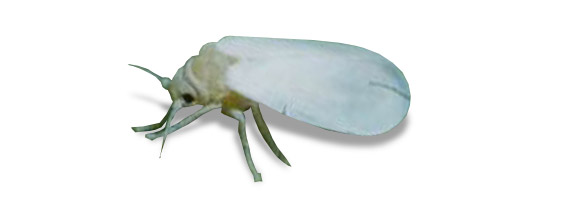Siltac – one of the best solutions for controlling greenhouse whitefly
The greenhouse whitefly (Trialeurodes vaporariorum) is one of the most harmful, commonly known pest of many plants grown under protection. It gives sleepless nights in particular for the producers of tomato, pepper, cucumber and certain species of ornamental plants.

The harmful effect of the greenhouse whitefly on plants is multidirectional and includes:
- damage to leaf blades as a result of sucking up the tissue fluids,
- production of honeydew suitable for sooty mold growth,
- transmission of viruses causing plant diseases,
- in ornamental plants, reduction of aesthetic values of plants.
Combating whitefly with traditional chemical methods is not easy due to the small range of registered insecticides and the increasing problem of resistance of this pest to chemical products. In addition, the problem is aggravated by the fact the whitefly cannot be controlled during the harvest period – due to grace periods of insecticides.
As the practice shows, Siltac turned out to be a very good solution in controlling the greenhouse whitefly. As a rule, this product is an effective antidote to the above-mentioned problems associated with traditional chemical protection.
Siltac combats mainly adult forms of the pest, therefore, to obtain a good protective effect, it is necessary to perform 2-3 treatments, approximately every 5-7 days. The level of reduction of the adult population after one properly performed treatment reaches 80-90%. This is a very high effectiveness.
Before starting treatments in the cultivation of tomato and pepper, it should be kept in mind that these plants require lower doses of the preparation due to the risk of phytotoxicity. The recommended concentration for these species is 0.05% to 0.07%, or 5-7 mL per 10 L of water. In cucumber growing, the concentration is 0.1%, i.e. i.e. 10 mL per 10 L of water.
The treatments should be carried out thoroughly to ensure that during the spraying the liquid reaches all places where the pests live. To reduce the risk of crop damage, ensure that the liquid dries quickly from the plant surface. To this end, perform the treatments during the day (never in the evening or at night), ensure the airing of the greenhouse after the treatment, do not spray the plants too abundantly. Do not spray the same plants several times during one treatment.
Back